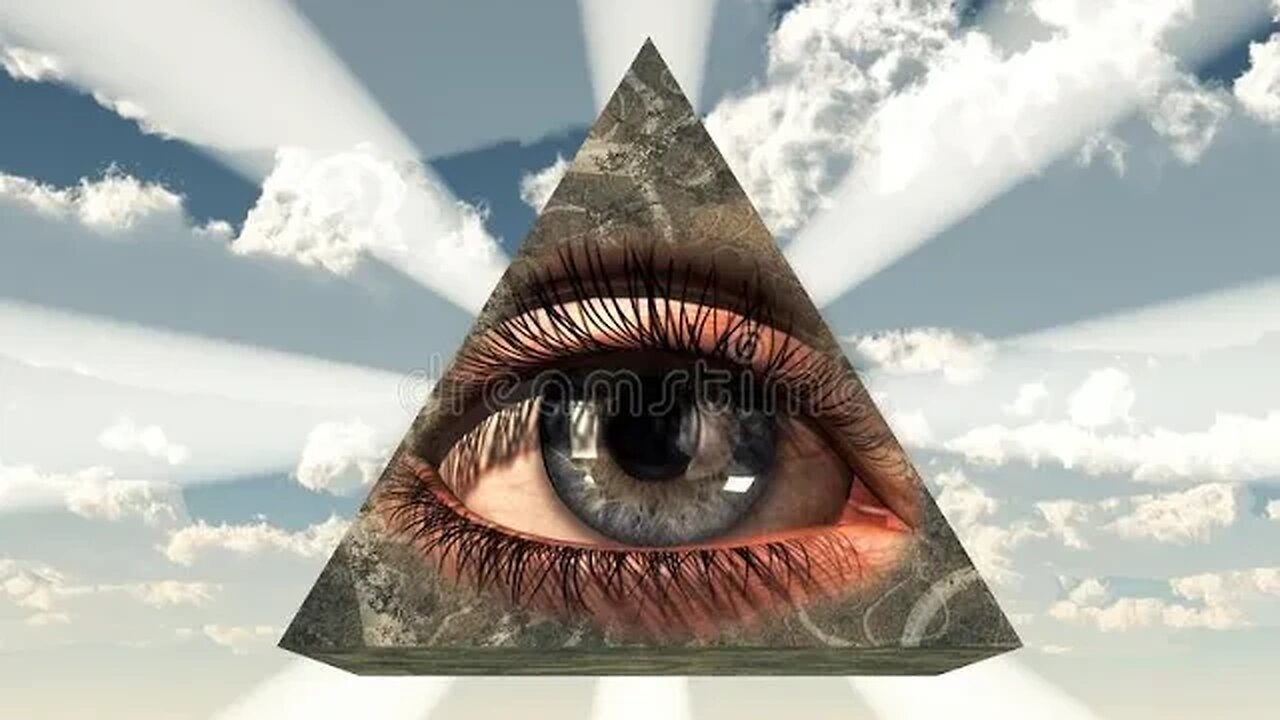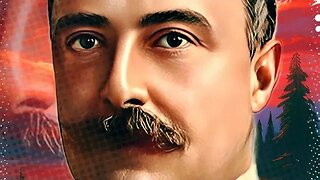Premium Only Content

Free Masonry: Eye Of The Soul
Freemasons, known popularly for their white aprons, arcane symbols and secret handshake, are members of the world's oldest fraternal organization. Despite its longevity, Freemasonry has long been shrouded in mystery. To outside observers, the organization's rites and practices may seem cult-like, clannish and secretive — even sinister.
Some of this stems from Freemasons' often deliberate reluctance to speak about the organization's rituals to outsiders, according to Time. But it is also partly the result of many popular movies and books, that have fostered misconceptions or depicted the order in an unflattering light.
In reality, however, Freemasonry is a worldwide organization with a long and complex history. Its members have included politicians, engineers, scientists, writers, inventors and philosophers. Many of these members have played prominent roles in world events, such as revolutions, wars and intellectual movements.
In addition to being the world's oldest fraternal organization, Freemasonry is also the world's largest such organization, boasting an estimated worldwide membership of some 6 million people. As the name implies, a fraternal organization is one that's composed almost solely of men who gather together for mutual benefit, frequently for professional or business reasons. However, nowadays women can be Freemasons, too.
Freemasons, or Masons as they are sometimes called, are dedicated to loftier goals as well. Bound together by secret rites of initiation and ritual, its members ostensibly promote the "brotherhood of man," and in the past, have often been associated with 18th century Enlightenment principles such as anti-monarchism, republicanism, meritocracy and constitutional government.
A code of ethics also guides the behavior of members. This code is derived from several documents, the most famous of which is a series of documents known as the "Old Charges" or "Constitutions." One of these documents, known as the "Regius Poem" or the "Halliwell Manuscript," is dated to sometime around the latter 14th or early 15th century, and is reportedly the oldest document to mention Masonry. Freemasonry and Christianity have had a complex, often divisive, relationship. Some orthodox Christians have taken issue with Freemasonry's Deism and its frequently perceived ties to paganism and the occult.
Freemasonry has its origins in the stonemason guilds of medieval Europe, these guilds, especially active during the 14th century, were responsible for constructing some of the finest architecture in Europe, such as the ornate Gothic cathedrals of Notre Dame in Paris and Westminster Abbey in London.
Like many artisan craft guilds of that time, its members jealously guarded their secrets and were selective about who they chose as apprentices. Initiation for new members required a long period of training, during which they learned the craft and were often taught advanced mathematics and architecture. Their skills were in such high demand that experienced Freemasons were frequently sought out by monarchs or high-ranking church officials.
The guilds provided members not only with wage protection and quality control over the work performed but also important social connections. Members gathered in lodges, which served as the headquarters and focal points where the Masons socialized, partook in meals and gathered to discuss the events and issues of the day.
Many of these new members were "learned gentlemen" who were interested in the philosophical and intellectual trends that were transforming the European intellectual landscape at the time, such as rationalism, the scientific method and Newtonian physics. The men were equally interested in questions of morality — especially how to build moral character.
THE SYMBOLS OF FREEMASONRY
The world of Freemasonry is composed of esoteric signs and symbols that are baffling to most non-Masons. Perhaps the most common are the compass and square, which are the universally recognizable symbols of the organization. They typically emblazon the lintels above lodge entrances and can be found on the aprons worn by Masons during rituals.
Although there is not a single, universally agreed upon meaning, most Masons would probably contend that these two objects in conjunction are meant to represent how a Mason should conduct himself, according to an online dictionary of Masonic symbols. The square signifies that a man should act "square" with his fellow man — that is, he should be honest and forthright in all his dealings. The compass is a reminder to engage in moderation, and not to get carried away by life's vices.
In general, Masonic symbols — such as the beehive, the acacia tree and the all-seeing eye, to name a few — are meant to invoke ideals, remind members of correct modes of conduct and behavior, and impart important lessons.
"The symbols of freemasonry largely have to do with ethics — how one should live their life.
-
 12:27
12:27
Literati
1 year agoWilliam Arthur Ward: Unleashed Thinking
119 -
 1:37:05
1:37:05
AlaskanBallistics
5 hours ago $1.45 earnedI Love This Gun PodCast #16
22.6K3 -
 2:59:26
2:59:26
Twins Pod
14 hours agoEMERGENCY PODCAST WITH ANDREW TATE! - Twins Pod - Special Episode - Andrew Tate
156K160 -
 2:52:01
2:52:01
Jewels Jones Live ®
2 days agoTRUMP SECURES BORDER | A Political Rendezvous - Ep. 113
79.7K36 -
 25:02
25:02
marcushouse
1 day ago $43.66 earnedStarship Just Exploded 💥 What Went Wrong This Time?!
166K80 -
 12:00
12:00
Silver Dragons
1 day agoBullion Dealer Reveals Best Silver to Buy With $1,000
103K11 -
 12:58
12:58
NinjaGamblers
17 hours ago $15.20 earnedIs This The BEST Way to Win At Roulette? 😲
143K13 -
 1:01:54
1:01:54
CharLee Simons Presents Do Not Talk
3 days agoCALIFORNIA'S DONE!
97.3K41 -
 7:33
7:33
MudandMunitions
1 day agoUnboxing My FIRST Revolver! Smith & Wesson 442 .38 Special and What’s Coming Next for the Channel
125K16 -
 1:01:05
1:01:05
Trumpet Daily
1 day ago $13.46 earnedGermany Started Two World Wars and Now Wants Nuclear Weapons - Trumpet Daily | Mar. 7, 2025
99.9K92